2020 IRTAF Grant Winners
This Winter, the Illinois Retired Teachers Association Foundation (IRTAF) will award $36,500 in grant money to several public school educators from across the state. This grant money will allow these educators to enrich their instruction with materials not otherwise available to them. Their students are the real winners! A special thank you to the Illinois Principals Association for their assistance with the promotion of this program. Below, you will find the name of each winner listed, along with his/her school, IRTA Area, and a paragraph summary about each project in the winner’s own words.
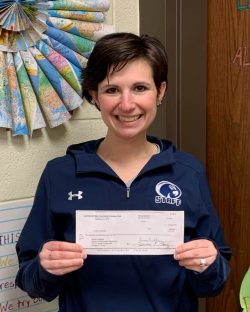
Amber Edwards
Amber Edwards, Prairie Central Upper Elementary, Forrest (1)
Last year, I noticed students only reading from one genre they enjoyed and hesitant to explore other types. I started a “Genre of the Month” activity, which challenges students to read a specific genre that would help them venture out into new text they might never have read. With the majority of the class wanting to take on the challenge, I quickly realized how limited my classroom library was in specific genres. This grant would allow me to purchase additional books for specific genre challenges that I am currently lacking in my classroom library.
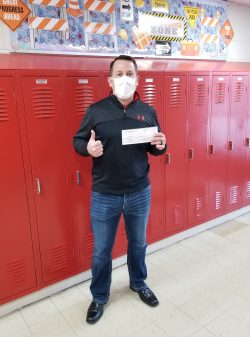
Justin Eggenberger
Justin Eggenberger, Dwight Common School, Dwight (1)
Our school district is upgrading hardware for our classrooms. Each teacher will be receiving a Promethean Board. I would like to add a speaker to my interactive whiteboard.
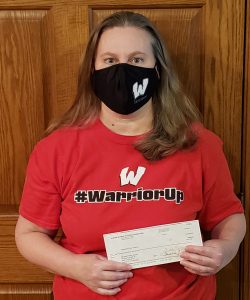
Margaret Finlen-Jenkins
Margaret Finlen-Jenkins, Woodland CUSD #5, Streator (1)
The only thing I knew for sure this past summer was that the new school year would contain some type of remote learning. I attended many webinars searching for solutions that would work not only for the 2020-2021 school year but something I could still implement in future years. The solution was a document camera, individual double sided dry erase graphboards, and professional development on the best practices from experienced online teachers.
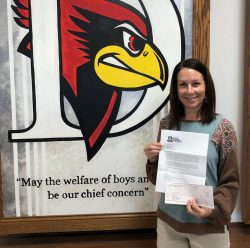
Angie Geheber
Angie Geheber, Dwight Common School, Dwight (1)
The curriculum that the students would benefit from being taught yearly and progressing through is Handwriting Without Tears. The Life Skills classroom would begin with Get Set for School which combines purposeful play with multi-sensory experiences including music and creating a hands-on, developmentally appropriate, and research-based program to develop learning how to form and beginning to write the letters of the alphabet. This would be the beginning of a three year curriculum that would teach the students activities to build hand strength and grip, develop proper grip, correct formation of letters, correct writing of letters, words, sentences.
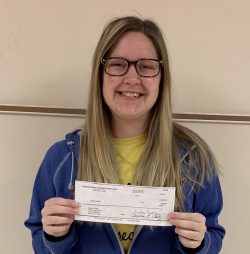
Sydney Groen
Sydney Groen, Warren High School, Warren (1)
I will teach my students how to use soil test kits to determine the amounts of Nitrogen, Potassium and Phosphorus in different soils. They will use the soil color sheet to correctly state the color of soil.
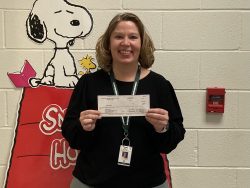
Kimberlee Haab
Kimberlee Haab, Coal City Early Childhood Center, Coal City (1)
I am in need of decodable readers that follow the Science of Reading research to teach my Kindergarten students how to read. The books I have currently are not supported by this research as they are pattern books that rely heavily on pictures and encourage word guessing. I’m excited to follow the brain research that supports how young children best learn to read and see the impact it makes on their reading journey.
Lisa Johnson, Morris Grade School, Morris (1)
Times Tales will be used to help students learn and memorize their times tables by teaching the reason behind their meaning, as well as teaching mnemonic stories to trigger their memory until the facts are memorized. It is nearly impossible to teach division in 4th grade when students do not know their multiplication facts, which leads to frustration and feelings of inadequacy. I would like this program to be taught in 3rd and 4th grade so students are hearing it twice, and will be much more likely to succeed in 4th grade 2×2 multiplication and in division.
Stacey Mooney, Eureka Middle School, Eureka (1)
We have created a grocery store simulation at our school for life skills special education students. We needed money calculators and a cash register to take our project to the next level.
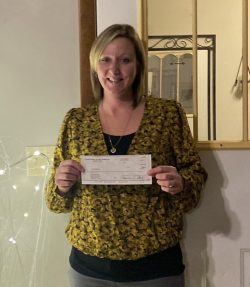
Christine Murphy
Christine Murphy, East Coloma Nelson, Rock Falls (1)
I have been teaching for 13 and this is my first year teaching 4th grade. Our class will be doing a biography book report this year. I plan on making this a unit emphasizing on research, grammar, and creativity. Being this is my first year in fourth grade, I am in desperate need of books for a classroom library to make this project happen.
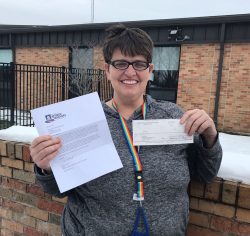
Holli Rapp
Holli Rapp, Northwest Elementary School, LaSalle (1)
The project would fulfill my desire to have working STEM and STEAM bins for my students to work with on a daily basis as part of the Science/Reading block. The ability to use STEM bins will benefit my students ability to use hands on approaches to their learning. This project will also allow for the purchase of additional Fairy Tale/Fable stem kits for the students to discuss fairy tales.
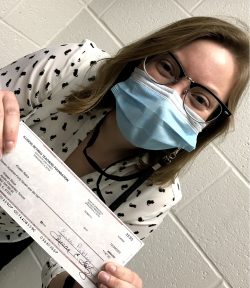
Kristen Reick
Kristen Reick, Apollo Elementary School / Mercer County Intermediate School (MCIS), Aledo (1)
Families making music together is at the heart of an enduring and effective music education that will last generation after generation. Fine Arts Nights are great opportunities to bring families into the school and teach them new ways to make music at home. Having a drum circle will provide the opportunity for families to learn together, get creative, and bond. Helping families find ways to make music together is a critical part of a community centric music education program that will benefit students for the rest of their lives.
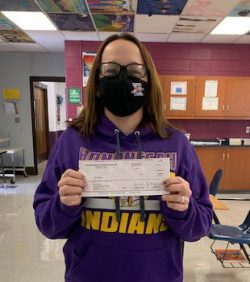
Erin Weldon
Erin Weldon, Hononegah High School, Rockton (1)
Funds will be used to provide Spanish novels to my Spanish IV class, in addition to teacher resources including the audio of the text. Reading is one of the number one ways to acquire language, and this novel (Robo en la noche) is high-interest, and includes two leveled versions (present and past tense).
Sarah Agnew, Little Fort Elementary School, Waukegan (2)
The handwriting is on the wall. You’ve heard the argument over and over again…handwriting is done… keyboarding skills all the way…but not so fast! Research shows that learning to write cursive by hand is both beneficial to brain development and an important life skill to have.
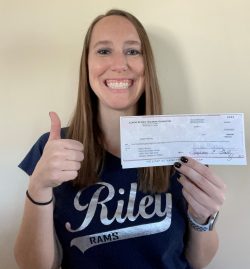
Kayla Fleming
Kayla Fleming, Riley Elementary School, Arlington Heights (2)
In our educational life skills program, our students are primarily working on developing their independence in the areas of fine motor skills, communication, social emotional learning and self-help skills. The shoebox tasks from the autism TEACCH program will help our students improve in all areas of their development. These tasks will be used year after year and they are appropriate for all ages and abilities. Watching our students gain the confidence they need to become more independent is our overall goal in our life skills program.
Dr. Felisha Parsons, Oakton Elementary School, Evanston (2)
I know how much students love science. Unfortunately, it will be an arduous task to teach science remotely. I would like to purchase individual science kits for each student so they can explore at home. Our science units are water, weather and climate and a mystery project-based unit so I would choose science kits related to those topics. The kits would complement my lessons and activities.
Jacquelyn Willer, Elgin Math and Science Academy, Elgin (2)
To increase student engagement, we want to utilize GoGuardian Teacher licenses to ensure that students are working on the correct items. GoGuardian would also give us the ability to take over a student’s screen to show them where to go, and call students if they are not present for a zoom call straight from their computer.
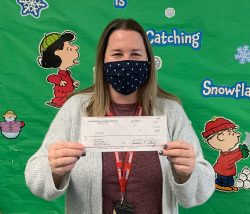
Keri Andrews
Keri Andrews, Tri-Point Jr. High, Piper City (3)
The project includes 8th grade students and kindergarten students. Each year 8th graders become peer buddies with the kindergarten students in the district. The 8th graders write a short story using the kindergarten student as the protagonist.
Melissa Beauvois, Head Start, Champaign (3)
The project is going to be used to strengthen the kids gross motor/ and math science domains in order to get better check point scores. We have scored low on the check point scores in the past and are wanting a better score and having new items for this project will help tremendously. The children will be able to learn with new items and have a variety of tools to learn from.
Jennifer Feeney, Urbana Head Start, Urbana (3)
I envision creating a classroom which fosters children’s abilities to both engage in conversations about, and understand and describe feelings and emotions. Through utilization of these resources, this vision will be achieved. Not only will children learn how to recognize emotions in themselves and others, they will also gain mastery in their ability to self-regulate and manage these emotions.
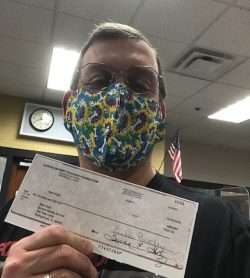
Alan Holtz
Alan Holtz, Brooks Middle School, Bolingbrook (3)
By the time students hit middle school, reluctant readers abound and the number of readers begins to decrease. In an effort to motivate students to read more, we want to start a reading competition with a “Battle of the Books” as our culminating event. Competition is a great motivator for students, and if we make a sport out of reading, we will see more students get involved and participate. Since reading is ordinarily a solitary activity, teams allow readers to come out of their shell and make new friends.
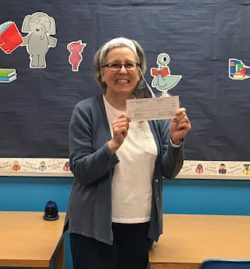
Josephine (Mickie) Lewis
Josephine Lewis, Jefferson Elementary School, Berwyn (3)
The IRTF Grant will be used to purchase STEM kits for the Jefferson Elementary School library. Students will be able to use the kits after they check out their library books. Using the items in these kits will enable students to engage in critical thinking and problem solving, and also foster creativity and teamwork.
Amanda Nichols, Oakwood High School, Fithian (3)
In order to enhance our growing Art Classes our students would benefit from a clay wheel. This would allow students to advance in pottery and attain skills that could help them in future classes. This is also an experience that could lead to inspiring a career in pottery.
Jessica Peterson, Reavis Elementary, Lansing (3)
Reading plays such a critical role in a child’s education. Unfortunately, working in a low income district, many of the children do not have books at home to read. This is why it is so important to flood them with books while they are at school. Having a classroom library full of books that children are interested in, helps them become better readers and writers. It exposes them to things they would otherwise never experience.
Kathleen Puttkammer, Meadow Lane Intermediate School, Merrionette Park (3)
During the 2020-2021 school year, 60 mixed-ability fifth grade students will choose to read from four novels: one historical fiction novel, one realistic fiction novel and one fantasy novel, and one mystery novel. Students will participate in structured, collaborative discussion groups with thinking skills, and engaging activities during and after reading the books. Students comprehension and enjoyment will be measured through the use of rubric-graded assignments and rating scales. The activities will consist of research, aligning novels with learned literary elements, figurative language, and conclude with student choice culminating projects.
Ellie Trunk, School Association for Special Education – DuPage County, Lisle (3)
I am a 3rd-year teacher for SASED a cooperative that serves students in Special Education in DuPage County. In the Deaf of Hard of Hearing early childhood program, we use an incredible ELA curriculum (29 units) that brings early literacy success to students with hearing loss. I’m building a base of dramatic play toys that match the curriculum to allow students to practice the sounds, vocabulary, and concepts outside of the ELA learning time and generalize the curriculum objectives. Children ages 3-6 learn best through play, so building on academic concepts through play will yield the best success for my students with hearing loss to achieve similarly to their hearing peers.
Taylor Andrews, LaSalle Elementary School, Creve Coeur (4)
In my classroom, we barely have any books to read. My students crave to hold books and learn to find their sight words in books appropriate for their age group. We would use these books to help enhance their ELA skills and fluency.
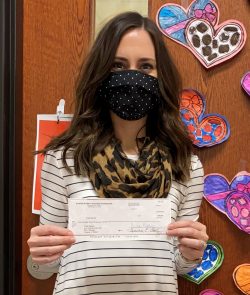
Trista Barrett
Trista Barrett, A-C Central CUSD 262; Virginia CUSD 64, Virginia (4)
How to provide quality, engaging, evidence-based instruction for both in-person and at-home learners is at the forefront of every educator’s mind this academic year. Access to paper-based and digital activities is essential in continuity of care for general education and special needs learners; however, funding for such resources is not readily available due to ongoing budget restrictions as well as the financial burden this pandemic has placed on rural and urban school districts alike. I am requesting a variety of paper-based and digital materials that will help me provide therapeutic intervention to my speech and language students whether in person or through an online platform.
Heather Brand, Mossville Grade School, Mossville (4)
I would like to purchase a document camera for in-person and remote learning opportunities. This camera will allow me to display directions, books, worksheets, and manipulatives in front of students while I am teaching. It will also allow me to send videos with Screencastify (a newly purchased learning app for our district) for read alouds and remote and in-person instruction.
Solange Davis, Sangamon Valley Intermediate, Illiopolis (4)
The students at Sangamon Valley that are receiving Response To Intervention (RTI) support need quality guided reading materials that meet them where they are at in their abilities to support growth. The intermediate building needs a selection of low level readers so that our low level readers can build their reading skill set to grow in their abilities to read grade level appropriate text.
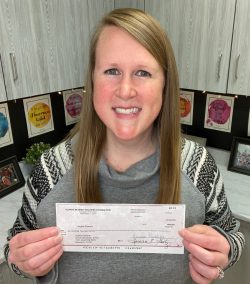
Angela Edwards
Angela Edwards, Grove Elementary School, Normal (4)
Building a community, fostering relationships, and embracing the uniqueness of each student are essential for a successful classroom. One of the ways I achieve these goals is by having themed morning meetings where we explore and discuss diversity, social and emotional traits, and have open and honest conversations with each other. Picture books are the primary mode used to engage students in discussions and help them make connections to the topics being discussed. The picture books related to our morning meeting themes that will be purchased with this grant will be great assets to our classroom.
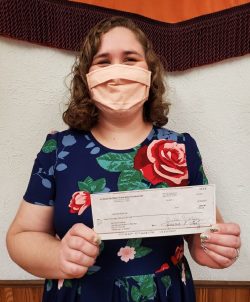
Nichole Folkman
Nichole Folkman, Hartsburg-Emden CUSD #21, Hartsburg (4)
Students at Hartsburg-Emden are exploring the world through a #PostcardFieldTrip. They are reading books, learning about culture, participating in online activities, and viewing virtual field trips to experience the world. They even get postcards in the mail from the librarian, Mrs. Nichole Folkman, from all over the world! This is especially helpful during remote learning, but can and will be continued in the future.
DeEtte Garman, Midwest Central Primary School, Manito (4)
We are currently working hard to make our library collection more current and more relevant. Our special area of interest is a collection of books that encourage appropriate social emotional development for our students.
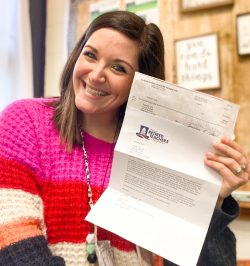
Kayleigh Gray
Kayleigh Gray, Lincoln School, Macomb (4)
As an elementary school teacher, I am always looking for books that support diversity and equality. This project asks for 21 new books for my classroom library that I can use to integrate diversity and equality topics into the curriculum. Representation is important in the classroom and I am trying to do my part by adding more books that all students can connect with in my classroom.
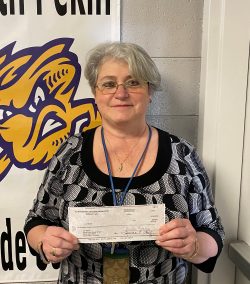
Lori Martin
Lori Martin, South Pekin Grade School, South Pekin (4)
My project is to acquire a class set of XY Axis Lap Boards and the supplies needed to use them in my 5th – 8th grade classrooms. My students will be able to become familiar with the coordinate grid in 5th grade, continue graphing in 6th and 7th and then use them in 8th grade for linear equations and finding slope. Students are excited when they can use the dry erase boards for activities and enjoy their time on them so much that they don’t realize that they are actually learning math! This is an investment that will be utilized for many years to come.
Sydney McDaniels, Midwest Central Primary School, Manito (4)
I currently teach in a 2nd and 3rd grade resource classroom. The students need a lot of help with spelling their sight words in order to write sentences and produce stories. My project is to help my students become awesome spellers!
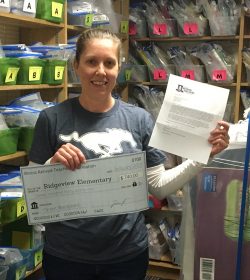
Amanda Meyer
Amanda Meyer, Ridgeview Elementary School, Colfax (4)
The K-2 team at Ridgeview Elementary School will guide students through informational texts related to their ELA Unit of Study within guided reading and writing instruction. Teachers and students will have access to leveled texts and interactive read aloud texts to learn about topics within the NGSS and Social Studies C3 Framework. The team will work to effectively teach students to problem solve letters and words, fluently read, and comprehend the informational texts. Students will enhance their knowledge of the NGSS and Social Studies C3 Framework through the high-quality and engaging text sets provided by Steps to Literacy and Booksource.
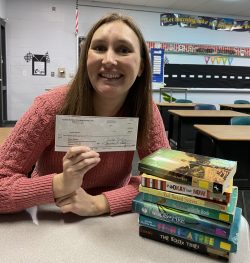
Keeley Ruhland
Keeley Ruhland, Mossville Elementary and Junior High School, Mossville (4)
Letters About Literature is a national reading contest designed to engage students in choice reading and share with an audience how books have impacted them personally. After reading a book, students write letters to the author explaining their personal connections to the characters and plot of their selected novel. The Letters About Literature project engages students in reading while giving them an outlet to express their voice on a wide variety of topics.
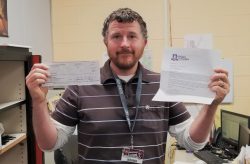
David Sceggel
David Sceggel, Illinois Valley Central High School, Chillicothe (4)
I would use the grant to purchase leveled novels in Spanish to expand and maintain a Free Voluntary Reading program here at IVC. There is so much good research on the importance of self selected reading programs to develop fluency in any languages and here at IVC, we are working hard to build up our FVR library and program.
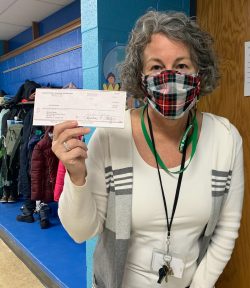
Michele Stewart
Michele Stewart, Mossville Elementary School, Mossville (4)
In order to expose students to a variety of book genres, we propose a Book Taste. A restaurant will be created where the books are the “tasted” in order to determine whether it’s a novel they may enjoy reading further. This is done to encourage students to try a book they might not normally be drawn to in the library.
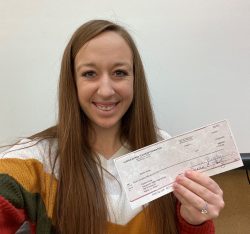
Paxton Acree
Paxton Acree, Sangamon Valley High School, Niantic (5)
I’m creating this project to enhance my teaching techniques with technology and give my students more access to technology in my classroom. With the assistance of IRTF, I want to eliminate some barriers I currently face when trying to teach my students mathematics with technology. My students will greatly benefit from the addition of technology tools and be able to use them for years to come in my classroom.
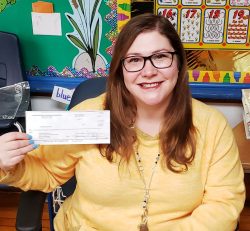
Stephanie Barding
Stephanie Barding, Okaw Valley Elementary School, Bethany (5)
With remote learning in place for some students, as well as the possibility the district will eventually go to full remote learning, my goal in writing this grant is to better equip my classroom for distance learning to ensure educational excellence for all students.
Shari Bruyn, Okaw Valley High School, Bethany (5)
In a normal school year, I teach a class called “Geometry in Construction,” a hands-on math class that uses geometry in the wood shop. Students learn the math behind the construction of various projects. Students plan, measure and build wooden objects such as Cornhole Boards, playhouses, and picnic tables. This year during COVID, this class has been suspended, but the exercise of planning and building objects will benefit calculus students as well.
Lindsey Castle, Memorial Elementary School, Taylorville (5)
This grant would help fund our school’s first Makerspace, an area inside our building specifically used for collaborative work with students. This is a more student-led area where the teachers give a basic prompt, with details, and the students carry out the activity using the previously stated skills. Children are provided with activities which allow the following: hands-on learning, exploring, creating, sharing and discussing ideas with peers, critical thinking skills, teamwork, trial and error, boosting self-confidence, and celebrating success. This area will help promote S.T.E.A.M. within our school, and prepare our students with necessary 21st Century Skills needed for today’s ever-changing digital world.
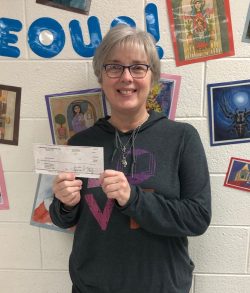
Michelle Goodwine
Michelle Goodwine, Hutsonville CUSD #1, Hutsonville (5)
Hutsonville CUSD #1 is a small rural district which includes several small outlying communities. Many of our students are not served by a public library district and there is also a population which technically would have access, but because of transportation and location issues, find their public library inaccessible. “Reaching Rural Readers” is a project to get these students access to eBooks through their school library.
Brooke Hahn, Riddle Elementary, Mattoon (5)
A listening center Models fluent reading.
Helps students decode unfamiliar words.
Teaches critical listening skills.
Introduces new vocabulary.
Provides a read-aloud model.
Introduces new genres that students might not otherwise consider.
Introduces students to books above their reading level.
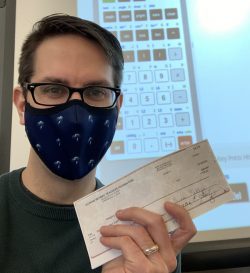
Gregory Higby
Gregory Higby, Sangamon Valley High School, Niantic (5)
There is a need to supply a low income rural school with graphing calculators to assist in driving instruction. The $708 could afford 6 ti-84 plus ce graphing calculators at amazon for $118 each, helping year after year to reach several different levels of students. Additionally, these calculators are approved on standardized tests and can help low-level students achieve scores to help them be college bound.
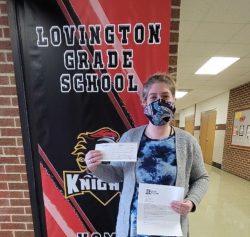
Jennifer Hostetler
Jennifer Hostetler, Lovington Grade School, Lovington (5)
My class would like to purchase a wonder workshop dash robotic kit and learn to code challenge cards with curriculum guide. We come from a rural community that does not offer any activities with robotics. With robotics being the future of the world, I’d like to offer my class each year a stem opportunity to program a mini robot to teach basic coding skills.
Stacy Marksberry, Sangamon Valley Primary School, Harristown (5)
I am requesting money to purchase materials for a sensory and calm down space that would be available to all students in our building. Our building has been working to implement Trauma Informed practices, to better meet the social emotional needs of our approximately 130 K-2nd grade students. By providing a sense of calm and comfort, sensory and calm down areas help students learn how to self-regulate their emotions and regain a sense of control so they can return to their school work more focused and ready to learn.
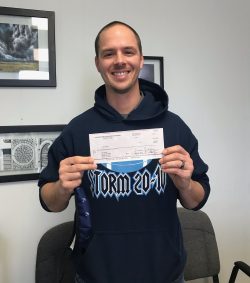
Carl Spath
Carl Spath, Sangamon Valley, Niantic (5)
I would like to have a document camera. This will allow me to show more information to my virtual learning students.
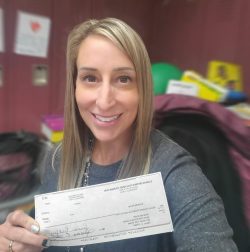
Amanda Ahner
Amanda Ahner, North Side Primary Center, Herrin (6)
Sing and Read Book Collections offer students a balance of language development, social skills, and readiness skills for learning. The large books and CDs support basic knowledge of concepts and target vocabulary. Reading the books or singing the songs also support phonological awareness. All of these skills are necessary for becoming a life-long reader.
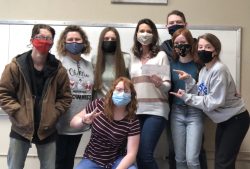
Bethany Anderson
Bethany Anderson, Waltonville High School, Waltonville (6)
As a high school mathematics teacher, I challenge my students every day to become the instructor and create their own understanding of the content. A high quality document camera would allow the students to create their own tutorial videos to share with classmates participating in both in-person and remote learning settings. In addition, the document camera would be a tremendous instructional tool for me to use to demonstrate a wide variety of mathematics problems worked in their entirety with detailed explanations.
Cindy Birkner, Webber High School, Bluford (6)
A&P is a new class, since we instituted Trimesters to increase our offerings. I would like to build the tools necessary to help both Health students and Anatomy students to gain a better understanding of the human body, structure and function. The models can also be incorporated into forensic activities and health related career fields.
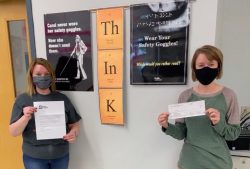
Melissa Barnett and Sara Chapman
Sara Chapman, Edwardsville High School, Edwardsville (6)
The grant would allow us to purchase enough Lego sets for 2 teachers to utilize throughout the day in our chemistry classes. Lego Models can be used in chemistry throughout the year to model: energy level model and electron excitation, modeling ionic compounds, solubility of ionic compounds and dissociation reactions, double displacement reactions, and limiting and excess reactants.
Chrissy Cockrum, Hamilton County Senior High, McLeansboro (6)
In our Sports Marketing class, we provide semi-professional marketing videos and photos for our athletic department and extracurricular activities. We are wanting to incorporate a chroma-key screen and lighting to create epic background sequences and make our videos even more dynamic.
Kate DeMonica, Edward A. Fulton Jr. High, O’Fallon (6)
The proposed project will allow for students to learn to effectively practice and receive feedback using SmartMusic: an instrumental performance-based web application. This application provides students with an end goal to achieve while participating in band virtually and will increase motivation to continue achieving their daily practice goals while independently learning how to contribute to a musically fulfilling ensemble. This will also allow larger community involvement since typical band concerts do no follow current state or ISBE guidelines.
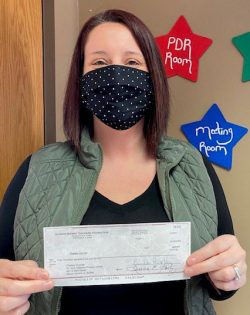
Chelsey Duncan
Chelsey Duncan, Dr. Nick Osborne Primary Center, Mount Vernon (6)
My students learn so much when given the opportunity to build and create with manipulatives. I wanted to provide a classroom full of hands-on learning and time to let their imagination run free. Being selected for this grant would make it financially possible for those dreams to come true.
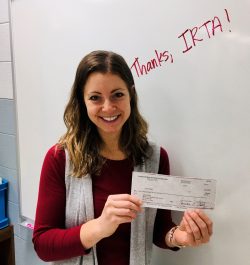
Jennie Gibbs
Jennie Gibbs, Benton Consolidated High School, Benton (6)
This grant proposal seeks to purchase a new, high-quality whiteboard for a high school math and science classroom.
Abigail Hawkins, Rome Grade School, Dix (6)
My goal is to create a classroom set of novels and instructional materials that will be used in the 5th grade classrooms at Rome Grade School. I am working to revamp our reading curriculum to instill the value of reading into my students by diving into the pages of books instead of electronic materials. We love technology, but I want my students to experience the adventures that can be found in a good book!
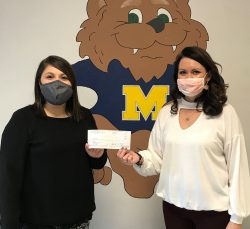
Malea Howell and Principal Lindsay Watts
Malea Howell, Longfellow Elementary School, Marion (6)
The funds for this grant would give kindergarten students access to six storybook STEM kits for engaging learning experiences year after year. Not only are these STEM kits an opportunity for students to complete a developmentally appropriate hands-on problem solving activity, each kit directly relates to a piece of literature that has been utilized in the classroom. This will strengthen the overall comprehension of texts as students are challenged to work with various story elements found within each book.
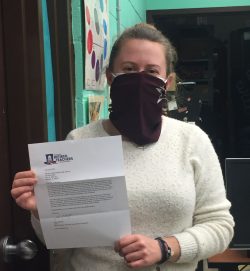
Annika Kolbo
Annika Kolbo, Benton Consolidated High School, Benton (6)
Properly displaying student work has been a project goal of mine for several years. The display units requested will be used to display student work as well as instructional examples. Compatible brackets and shelves will allow students to participate in setting up displays of work created throughout the year. The units are on castors, making them portable enough to move from the classroom to common areas where exhibits can be viewed by other students, parents, and the community.
Cassandra Kreke, Breese Elementary District #12, Breese (6)
I am requesting money to purchase a new set of novels for my fifth graders to read. Currently, we read two novels each year, but my students’ love for reading has them wanting more. I would love to read Wonder, by R.J. Palacio, with them, as this is a wonderful book that would instill positive character development within my students while nurturing their love of reading. I would love to add a third novel unit to my curriculum.
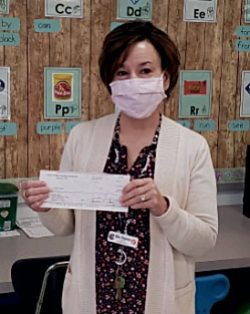
Teresa Powers
Teresa Powers, Tri-C Elementary School, Carterville (6)
I am requesting the IRTF award to provide my students with a functional place to learn. I teach in a self-contained classroom with students who range in moderate to severe disabilities including Autism Spectrum Disorders. The materials will provide a much needed learning space to sit, including providing them with easily accessible storage with a place for reading and writing.
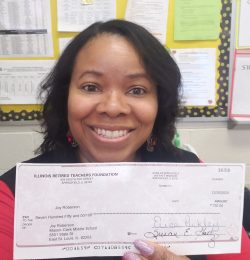
Joy Roberson
Joy Roberson, Mason-Clark Middle School, East St. Louis (6)
I would like to purchase books for our classroom library and an online Science/Stem program and materials to conduct the experiments. The Science program is called Generation Genius Basic Classroom Plan which is a program design to help keep the students more engaged with science by incorporating fun science experiments in class. I am teaching 5th grade for the first time and I do not have any fifth grade reading books at all to accommodate my students reading levels.
Ellie Winthrop, Hamilton County Senior High CUSD #10, McLeansboro (6)
I want to create a diverse classroom library for my students that inspires open-mindedness and critical thinking. These students are from small rural communities and lack access to varying points of view on life from people of different backgrounds. Books with authors and characters of different nationalities, ethnic backgrounds, gender identities, and religious backgrounds could provide students with much-needed windows into the worlds of other people, while other books can challenge their way of thinking and provide them with differing perspectives on life.
